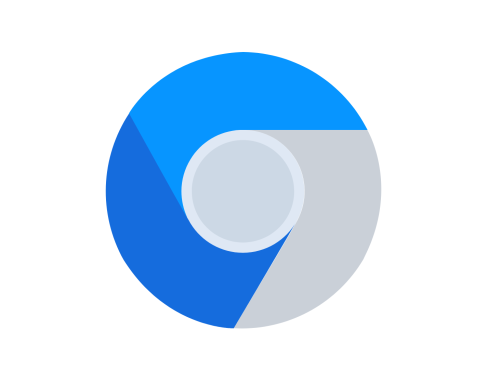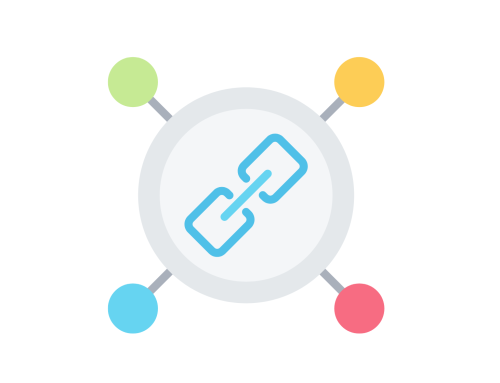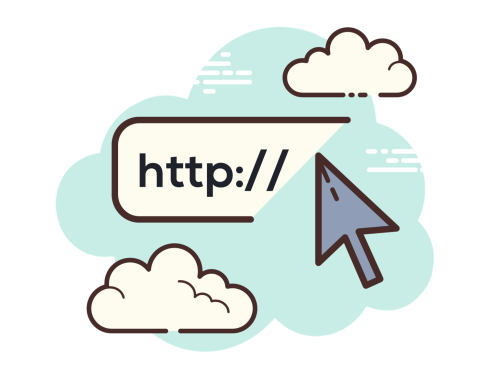Links are the nitty-gritty of any website that makes the way to Google #1 SERP. It was one of the most essential factors of SEO in 2021 and will remain the same now. Though, only a few website owners understand the power of link building.
For instance, the search engines like Google, Bing, Yandex, find relevant content from the link sources. Without links, a search engine cannot work. Therefore, if your webpage has a good number of links, it will attract comparatively higher traffic on your website than a website with less number of links.
There are two types of links: Internal links and external links. Internal links enable search engines like Google to understand the structure of your website. It establishes a hierarchy on your website to enhance the domain authority of your site.
In this case study, Ninja Outreach, a professional influencer outreach software, describes how they used internal links to help boost organic traffic by 40%.
In this blog, we are going to dive deep into understanding the functions and importance of internal links on websites and how it can help you rank higher on search engines.
Moreover, we will also tell you the best tools available for building internal links on your website. If you want to get the answers to all these questions, keep reading this blog further.
What is Internal Linking?
Internal links are used to unite one page on your website to another page. Both your users and search engines require links to steer content on your website.
In HTML form, internal links look like [ <a href=”readourblog.com/blog”>Read it now</a> ]. In other words, these links are like a map of your site, which navigates visitors and web-crawlers towards multiple relevant pages.
In addition, all internal links are simply backlinks – and it is not a mystery that backlinks are still one of the most essential factors for SEO. So, if your webpage has more backlinks attached to it, it will receive higher priority from Google’s algorithms.
Difference Between Internal Links And External Links
Internal links: Hyperlinks that link one page to another on the same domain.
External links: Hyperlinks that point to pages on different domains.
The main difference between internal and external links is that internal links keep your visitors on your website longer whereas external links improve the credibility of your website.
The idea behind internal links is easy to see as they keep your website visitors captivated with your website. On the other hand, external links may seem illogical because you don’t necessarily want your visitors to go to other websites.
However, both internal and external links are important for websites to rank on SERPs. Let’s find out different types of internal links under the next heading.
Types of Internal Links
Mainly, there are two types of internal links: navigational and contextual internal links. Let’s understand both of them one by one.
Navigational internal links
As the name suggests, navigational internal links typically make up a website’s main navigational structure. These links are often put on a website to help visitors navigate to the information they want.
For instance, you can find these links on the main menu, footer, or sidebar of your website. Ultimately, they make visitor’s lives as candid as possible.
Contextual internal links
Contextual internal links are typically placed within the main body content of a webpage. In other words, the links within the text indicating another relevant page are known as contextual internal links.
For instance, an e-commerce store has links pointing to different product pages.
In addition, pay attention to how prominent and ultimately clickable your contextual links are and how intuitive your navigational links are to provide the most value for your website.
Why Are Internal Links Important For SEO?
Internal links allow Google to find, index, and understand all of the pages on your website. Although internal linking can be a bit complex, it is one of the crucial factors of SEO.
If you use a robust strategy for internal links, it can help you increase the page authority (also called PageRank) to important pages. The entire architecture of your website depends upon internal links.
In short: internal linking is the key for any site that wants a higher ranking on the SERPs.
How to Audit Your Existing Internal Links?
Except for the newly launched websites, if your site is a bit older, it should be having some internal linking even without strategic thinking. Poorly structured internal links might be the reason why your website is underperforming.
it is advisable to know where your website stands before you jump directly into resolving the structure of existing internal linking on your website.
Moreover, you should document these criteria while auditing your internal links:
Crawl Depth
How many times does a user click to find the page?
A page’s distance from the homepage (the most authoritative page in a website) affects its overall SEO value, according to Google’s John Mueller. If your content page is too away from the homepage, the search engine would degrade its value based on lower authority.
You can use SEO plugin like YoastSEO to analyze crawl depth to your pages and export the data.
In short: aim to achieve a crawl depth of 3 clicks or fewer.
Internal Links
How many internal links does each page occupy?
Use YoastSEO to discover the number of internal links a page has.
Find pages having either too few or too high internal links.
Also, keep a close eye on these factors:
Orphan pages
Remove the pages having zero internal links. Pages without internal links are called orphans. Here, you can realize the importance of having internal links on your web pages.
Also, try to limit internal links to 100 [though there is nothing wrong in going beyond that].
Unimportant pages with a high amount of links
Internal links point search engines to the most important pages. When you point more pages to low-value or irrelevant pages, the search engine will pay more attention to these pages than the actual ones. Therefore, make it as simple as possible for the search engine to know your most important pages.
Low-quality or irrelevant links
Make sure a web page contains only those internal links that are relevant to the topic of the page. If it has any irrelevant link then it would hamper the search rankings of the website.
Internal links issues
Links that return an error restrict the user experience and can affect your SEO rankings.
You should be taking care of these links while auditing your existing internal links.
Broken links (4xx error)
Internal links to redirected pages (3xx)
How to Build a Perfect Internal Linking Strategy?
You have run auditing of your existing internal links on your website to know the drawbacks of your website.
Now, it’s time to make a perfect internal linking strategy to cope with your SEO expectations. We are going to list down a robust internal linking strategy for your website.
Analyze the ideal structure of your website
Firstly, we advise you to understand their website as a pyramid. On top of it is your homepage; below that there are rooms for categories or sections, and further down, there are individual pages and posts (possibly with subcategories in between).
Find your most important content
Find the content that has the highest level of relevancy. Put the link of that content in as many places as possible. This way you will let search engines know about the core values of your business or website.
Use contextual links
Ultimately, you want to tell search engines about your most complete content. How to do so? By linking it to as many relevant articles as possible. Don’t forget to link back to the page with the most important content on your website.
Link hierarchical pages
Pages aligned in a hierarchical order have a higher potential to rank than those without it. In other words, linking parent pages to their child pages is termed as hierarchical order.
Use this analogy to link relevant pages to each other. This way, your website will look more organized.
Add a related post section
Different plugins are available to put related post menus on your website. Though you should check whether the post under the related post heading is relevant to the content or not. However, adding related posts manually is the best way.
Try adding navigational links
Make your site look authoritative by adding the most important content to the homepage or the top navigation of your website. Doing this will help your website increase value in the eyes of search engines, which will lead to a better page ranking.
Add links to your taxonomies
Taxonomies, like categories and sections, help to organize content on your website. The more organized content your website has, the better it will be recognized by search engines.
Adding links to the category and tags helps Google understand the structure of your blog and helps generate traffic by navigating relevant visitors to the website.
Make sure you add the best content in the recent or popular posts
Lastly, it is advised to link your most important content to your website’s most popular or newest posts. Have a recent post feature in the sidebar or footer menu for better visibility.
2 Best Tools For Effective Internal Linking
If you are feeling overwhelmed after reading so much about internal linking, these two software will assist you in developing amazing results out of your internal linking strategy.
LinkWhisper
Link Whisper is a WordPress plugin that assists in automating the internal linking process on your website. A lot of website owners ignore this tool while managing their WordPress websites. Tough it is one of the best plugins you could have for your internal linking SEO.
It makes it super easy for beginners to analyze an entire WordPress website and mentions all the factors that should be used while optimizing internal linking. In addition, it also restricts the website from performing any major SEO penalties from Google with its warning feature.
Once you install this plugin, it will take 5-10 minutes to scan your website and come up with relevant internal links for your blogs.
Yoast SEO
Yoast SEO is considered as one of the finest SEO plugins for WordPress. It has recently crossed the milestone of 5million+ installations. It provides amazing SEO features for your WordPress website.
It doesn’t just help you understand your site structure but also helps in performing a robust internal linking strategy for a better ranking on SERPs.
The free Yoast SEO version provides only basic optimization features. However, it would not be wrong to bet on its premium version. In addition, you can perform almost every SEO technique using Yoast SEO (that’s why It is the most installed plugin for SEO).
Conclusion
Search engines are constantly crawling your website to know its core value. And using a robust internal linking structure would help them navigate easily towards the most important content on your website. Once they will find the most important content, they will start motivating your website over SERPs.
Therefore, focusing on building a perfect internal linking strategy for your website is very important. We have suggested to you the complete steps of developing a strategy.
So, you should stick to it and follow it using the tools which have been mentioned above.
Ultimately, your internal linking journey will start from auditing your website’s external internal links (in the case of an old website).
Once it is audited, start understanding your website’s structure and make relevant changes (as mentioned above). The new website doesn’t require auditing.
Meanwhile, don’t forget to take assistance from tools like Link Whisper or Yoast SEO (as they can make your work easy).
Boom! Work done.
Also, make sure you do proper modifications time-to-time to maintain a well-managed website. Use sections like recent posts, relevant posts, taxonomies, categories, menus, etc., to arrange your content systematically.








